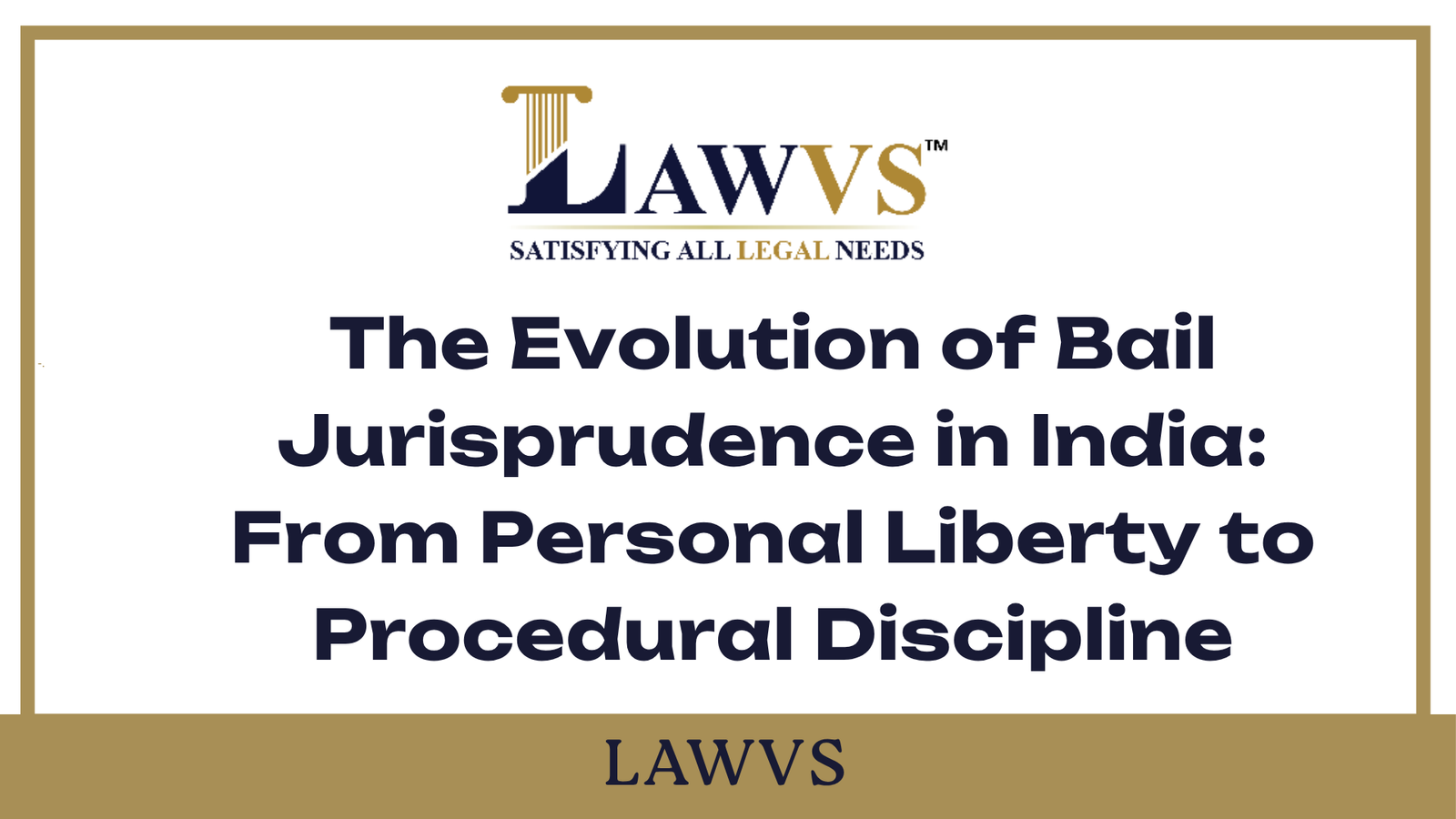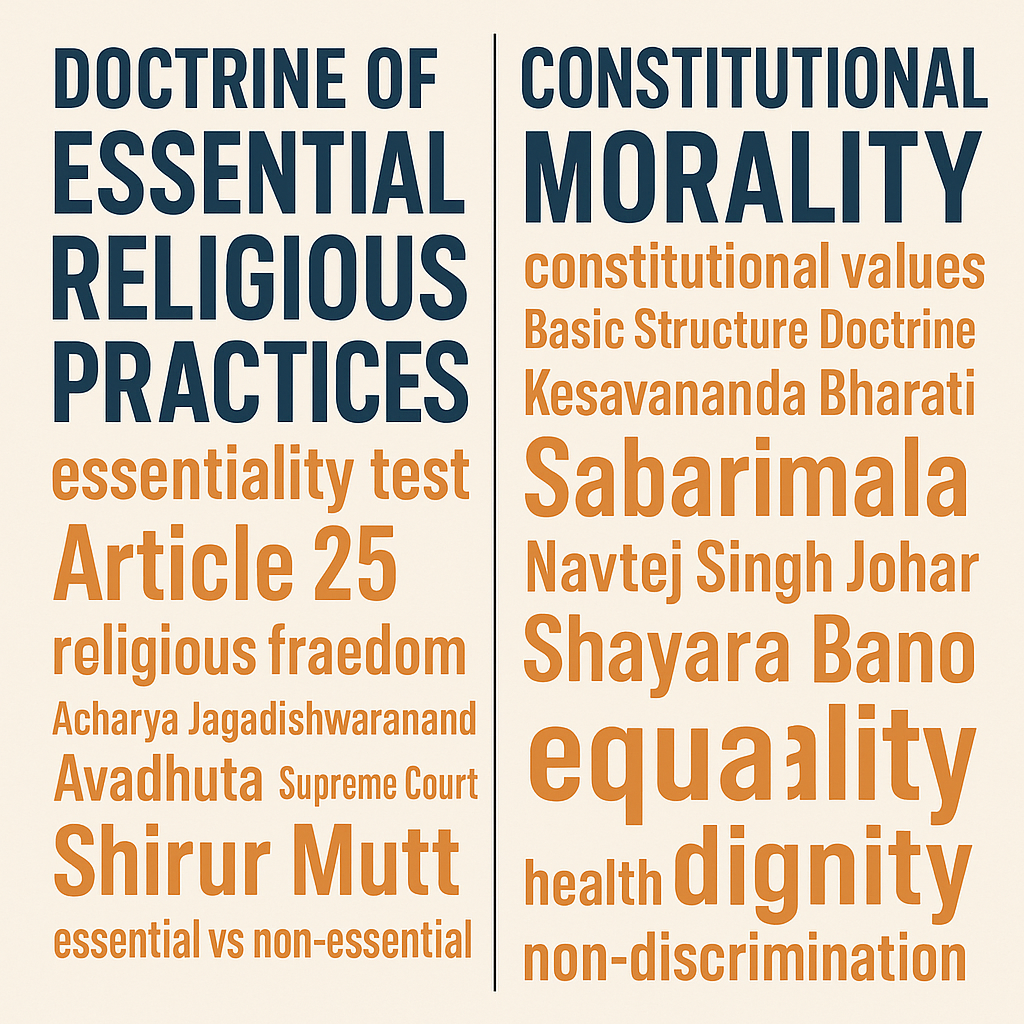The Evolution of Bail Jurisprudence in India: From Personal Liberty to Procedural Discipline
Introduction
Bail is not just a legal term—it's a fundamental expression of personal liberty enshrined in the Indian Constitution. Over time, Indian bail jurisprudence has evolved from being a procedural safeguard to becoming a crucial balance between the rights of an accused and the interests of justice. The law relating to bail is not codified in a single statute but has developed through statutory interpretation and landmark judicial pronouncements.
The Constitutional Backbone: Article 21 and Bail
At the heart of bail jurisprudence lies Article 21 of the Constitution, which guarantees the right to life and personal liberty. Courts have consistently held that liberty should not be curtailed unnecessarily, especially before conviction. However, this liberty must be weighed against the public interest and the possibility of tampering with evidence or fleeing from justice.
Types of Bail in India
The law recognizes three main types of bail:
-
Regular Bail – under Sections 437 and 439 of the CrPC for a person in custody.
-
Anticipatory Bail – under Section 438, granted before arrest.
-
Default Bail – under Section 167(2), when charge sheet is not filed within the stipulated time.
Each type addresses different stages of criminal investigation and requires a distinct judicial approach.
Shift in Judicial Attitude: From Rigidity to Realism
Initially, Indian courts were cautious in granting bail, especially in serious offences. But over the years, a liberal approach began emerging, rooted in human rights jurisprudence. The courts emphasized that bail is the rule, jail is the exception, unless there is a strong reason to believe otherwise.
A landmark moment came with the judgment in Gurbaksh Singh Sibbia v. State of Punjab (1980), where the Supreme Court laid down comprehensive guidelines for anticipatory bail, highlighting judicial discretion, not rigid rules.
Recent Reforms and Landmark Judgments
-
Satender Kumar Antil v. CBI (2022)
This judgment emphasized decongesting prisons and reaffirmed that an accused should not be unnecessarily detained. The Supreme Court issued guidelines encouraging magistrates to grant bail in appropriate cases without waiting for applications. -
Arnab Goswami v. State of Maharashtra (2020)
The Court reiterated that liberty cannot be sacrificed at the altar of procedural delay, reflecting how the judiciary is becoming increasingly rights-conscious. -
Fahad Shah v. State of J&K (2022)
The court examined whether journalistic work can amount to anti-national activity, and in the context of bail, ruled that bail should not be denied merely because of the nature of allegations without clear evidence.
Default Bail: A Weapon of Last Resort
Default bail is a statutory right, not a judicial discretion. If the investigation agency fails to file a charge sheet within 60 or 90 days (depending on the offence), the accused has a right to be released on bail. The Supreme Court in Ritu Chhabaria v. Union of India (2023) held that this right cannot be defeated by incomplete charge sheets or investigative delays.
Challenges in Practice
Despite progressive rulings, bail remains a complex and unevenly applied remedy. Factors like:
-
Lack of awareness among the accused
-
Overcrowded judicial dockets
-
Reluctance to grant bail in politically sensitive cases
-
Varying approaches by different High Courts
...continue to create inconsistencies.
The Way Forward
Judicial reforms and greater clarity in legislative drafting can streamline bail procedures. Digitization of FIRs, charge sheets, and bail hearings can aid transparency. Moreover, standard bail guidelines for trial courts can help reduce arbitrariness and ensure that liberty is protected uniformly across the country.
Conclusion
Bail in India has moved from a discretionary relief to a constitutional safeguard. Courts today are more sensitive to the misuse of pre-trial detention and aim to uphold the dignity of the individual. Yet, the road ahead demands consistent judicial practices, institutional reform, and better training for law enforcement to ensure that the balance between liberty and justice is maintained in spirit and in action.








